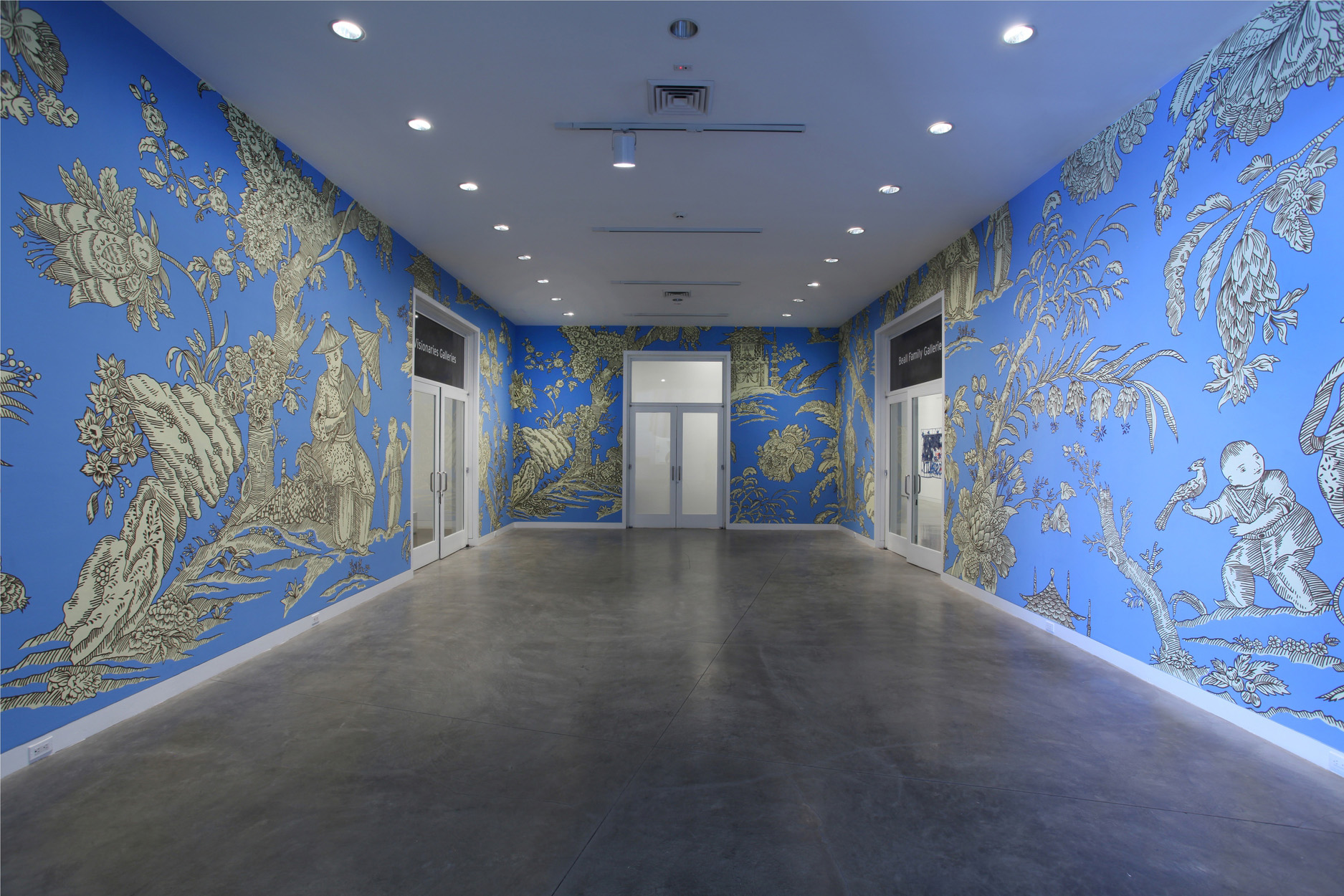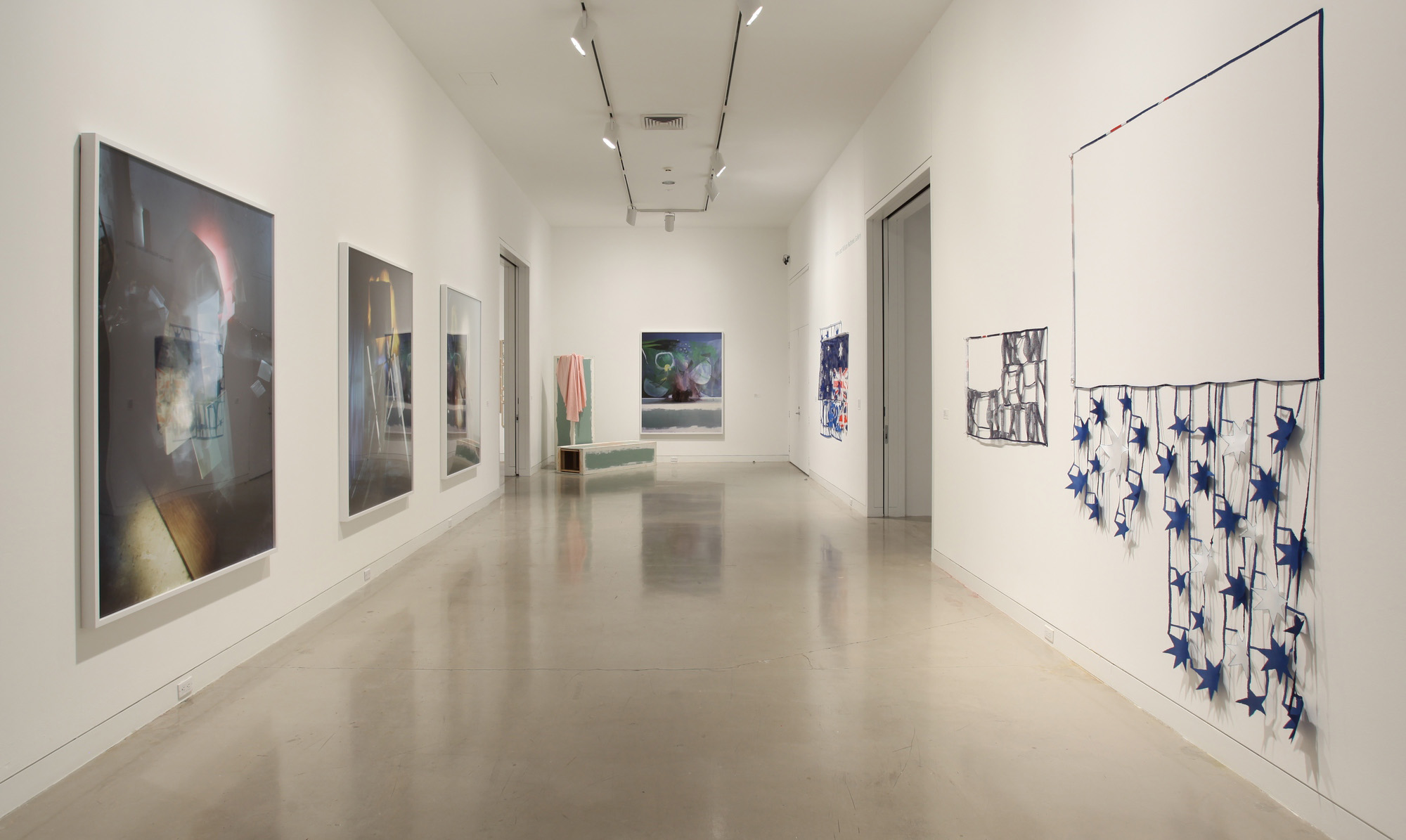Embracing the Pacific: Dan Cameron and the California-Pacific Triennial
by Gladys-Katherina Hernando

Michael Lin, Sharawadgi, 2013 . Site specific installation. Dimensions variable. Courtesy of the artist. Photo: Chris Bliss.
The first California-Pacific Triennial opened at the Orange County Museum of Art (OCMA) on June 30. Replacing the museum’s long-running California Biennial program, the international triennial marks a new approach, showcasing 32 artists from 15 countries across the Pacific Rim. On the occasion of its debut, we asked curator Dan Cameron a few questions about his curatorial process and some of the ideas that influenced the framework of the new triennial.
What inspired you to think about the Pacific Rim as an extension of California?
I have the Getty’s Pacific Standard Time initiative to blame for that. When I arrived on the job [from New Orleans] in the first week of 2012, all the Pacific Standard Time exhibitions were starting to close. My first assignment was a two-week immersion in what these overlapping histories had to offer. When I finished that humbling process, I came to the conclusion that in the area of recent California art, I really had nothing substantive to offer. But PST did get me asking questions about geography and demographics, and that kept my process moving forward.
The California-Pacific Triennial represents an update to OCMA’s California Biennial program, expanding its geographic focus and further distinguishing it from the new “Made in L.A.” biennial that debuted at the Hammer Museum last year. Thinking about geography, how does this shift away from the regional biennial reflect your own interests as a curator?
All biennials stem from the Biennale di Venezia, which set the standard in the 19th century for the biennial as an international overview exhibition that brings together art from many places. I personally believe that if it isn’t an international survey, it doesn’t really merit the name “biennial,” but that’s been a bone of contention of mine for a long time. My own curatorial work, from the Aperto in Venice in 1988—which gave many Europeans their first close-up look at Mike Kelley’s work, but also introduced the newest Japanese and Russian artists to a startled audience—to the Istanbul Biennial in 2003, and even Prospect New Orleans in 2008 and 2011, has always emphasized the importance of considering art from the broadest possible geographic perspective. I think that’s the world we live in today.

Installation view of “California-Pacific Triennial” at the Orange County Museum of Art, June 30-November 17, 2013. Photo: Chris Bliss.
The exhibition seems to be interested in creating a cross-cultural dialogue rather than an overarching theme. Were there any specific criteria you used to select each artist?
Not really. I began to hunt and gather, as curators do, and making lists of things I was interested in. Once I had kind of exhausted the initial field of possibilities, I began looking at what I had assembled, and trying to figure out how different things related to each other. It’s an additive and subtractive process that I try not to overanalyze, because certain hunches just don’t play out on paper, they need to be realized on the wall or the floor. I’m generally interested in art that communicates in a language people can understand, so there’s not much here that one could label esoteric. On the other hand, I think that setting up certain dynamic visual conversations between objects is partly a matter of taking responsibility for all the different meanings that can come out of a single work. In other words, the shared subjects are more emblematic of the overlapping cultural identities that we all identify, absorb, and borrow from during the course of a typical week.
Many of the artworks reference the world or look critically upon it, rather than following a more modernist (i.e., self-referential) aesthetic tradition. Do you think this is a cultural phenomenon along the Pacific Rim or the repercussions of a larger globalized vision of the world?
I think it’s both. Many of the artists in the triennial have had somewhat nomadic lives, where their families left one place to try for a better life elsewhere, or where they themselves have moved between far-flung continents, or maybe possess a peculiarly postmodern form of wanderlust that drives them to have bases on three different continents. It seems to me that the more cosmopolitan one’s own life experience, the less likely one would be to embrace a purely modernist mode of making art, because that mode is so overly identified with a European perspective of history—one that, for centuries, did not classify the products of non-Western culture as “art.” In other words, the skepticism that arises from this clash of histories is probably a natural outcome to having been considered marginal for so long.

Lin Tianmiao, All the Same, 2011. Colored silk threads, synthetic skeletons, and metal constructions. Dimensions variable. Courtesy Galerie Lelong, New York. Photo: Lin Tianmiao.
Prior to joining OCMA, you were a curator at the New Museum in New York and, in 2007, founded the Prospect biennial series in post-Katrina New Orleans. How has working both inside and outside of the museum context informed your curatorial process in relation to global art practices?
It’s an interesting perspective because for so many years I devoted myself to a curatorial practice that was deliberately far-flung: research and projects all around the world. Even during my decade at the New Museum, I was constantly on the move; and I think this is an important investment of time and energy for any curator working today. Having said that, my most recent commitment in New Orleans with Prospect combined the artistic direction of an international biennial with the cultural entrepreneurship that goes along with launching and funding such an operation. As life-transforming as that experience was, working once more within the relative safety and security of an art museum definitely has its advantages!
What do you want the viewer to gain from seeing these works together at OCMA?
Mostly I want to stimulate people’s curiosity about the art of our time: Where does it come from? Who makes it? What are its reference points? I also think that an exhibition like this one is a prime opportunity to argue for the pertinence of contemporary art in daily life. There’s a lot of material here that people wouldn’t necessarily expect to encounter in an art museum; and my principle is always that if you’re getting viewers to ask questions, it means you’ve already accomplished half of your job.